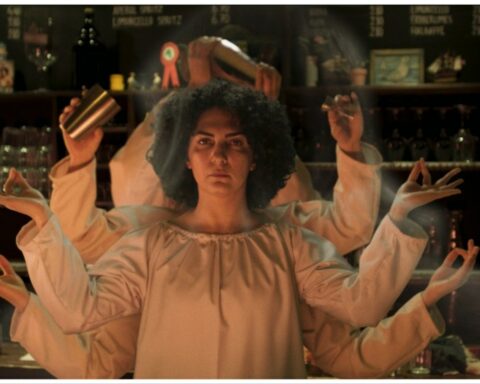
Hollywood employed fewer female filmmakers and directors from underrepresented communities to make its biggest films in 2022, according to a new study by USC Annenberg’s Inclusion Initiative.
The USC Annenberg report found that of the 111 directors hired to make the 100 top-grossing movies last year, just 9% were women. That was down from 12.7% in 2021. At the same time, the number of Black, Asian, Hispanic/Latino and multi-racial and multi-ethnic moviemakers also fell from 27.3% in 2021 to 20.7% in 2022. Women of color accounted for a mere 2.7% of directors of the top 100 movies last year. The declines come as the movie business, and particularly the major studios that call the shots, have been under pressure to provide more opportunities to female artists and people of color in the wake of social justice and advocacy movements such as #MeToo and #OscarsSoWhite.
Female employment in the film business was also the focus of a second study, dubbed “Celluloid Ceiling,” which was conducted by Dr. Martha Lauzen, founder and executive director of the Center for the Study of Women in Television and Film at San Diego State University. That report did not simply focus on directors, but widened its lens to include other key roles such as cinematographers, editors and producers. It found that only modest progress had been achieved since San Diego State University began examining the topic in 1998. Twenty five years ago, women comprised 17% of directors, writers, producers, executive producers, editors, and cinematographers working on the top 250 grossing U.S. films. In 2022, women have 24% of those positions. Over that period, the number of female filmmakers went from 9% to 18%, the number of female cinematographers moved from 4% to 7%, the number of female editors increased a percentage point to 21% in 2022. In other roles, women comprised 19% of writers (compared to 13% in 1998), 25% of executive producers (compared to 18% in 1998), and 31% of producers (compared to 24% in 1998). Taken together, the two reports show how hard it has been to alter the composition of an industry that remains dominated by white men.
“Given the number of panels, research reports, and hand-wringing devoted to this issue over the last two and a half decades, one would expect more substantial gains,” Lauzen said in a statement. “It took the accumulation of over two decades of advocacy efforts, research reports and an EEOC investigation to double the percentage of women directors from 9% to 18%, and women are still dramatically underrepresented in that role. One can only imagine that it will take the same amount of effort to increase the numbers of women working in other positions, such as cinematographers and editors.”
In terms of underrepresented filmmakers on the top films of last year, 11 directors were Asian, five were multiracial/multiethnic, four were Black, and three were Hispanic/Latino, according to the USC Annenberg study. This represented 3.8 white directors for every underrepresented director, the study says.
“Many people have traditions as they look back on the year past and on to the year ahead,” said Dr. Stacy L. Smith, founder of the inclusion initiative. “At the Annenberg Inclusion Initiative, it seems that our tradition is to lament how little things have changed for women and people of color behind the camera in popular film. We’d like to see not only the tradition change but also the hiring practices that continue to marginalize women and people of color as directors.”
There were notable exceptions. Some of the best reviewed films of the year, a group that includes Chinonye Chukwu’s “Till,” Gina Prince-Bythewood’s “The Woman King” and Maria Schrader’s “She Said” were directed by women. Another, Sarah Polley’s “Women Talking,” debuted in limited release at the end of 2022 and was not included in the USC Annenberg study. And Black directors like Ryan Coogler (“Black Panther: Wakanda Forever”) and Jordan Peele (“Nope”) made some of the highest-grossing movies of last year. The studies also focused on theatrical releases and do not measure most of the movies made by companies such as Netflix and Amazon.
The San Diego State University study found that films overseen by female directors tended to be more populated by female craftspeople and artists. On films with at least one woman director, women comprised 53% of writers, 39% of editors, 19% of cinematographers, and 18% of composers. However, on films with exclusively male directors, women accounted for 12% of writers, 19% of editors, 4% of cinematographers, and 6% of composers.
USC Annenberg has been tracking representation behind the camera since 2007. There have been improvements over that time period. In 2007, just 2.7% of the top grossing films were from female filmmakers. That percentage has fluctuated, rising as high as 15% in 2020 and falling as low as 1.9% in 2013 and 2014. In 2007, just 12.5% of filmmakers on major Hollywood productions were from underrepresented communities.
Among the major distributors, Sony Pictures worked with the five women directors in 2022, the most of any studio. It was followed by Universal Pictures with two. Lionsgate, Paramount Pictures, STX Entertainment, 20th Century and Walt Disney Studios did not hire any female filmmakers for its 2022 releases, the USC Annenberg study says.
Universal Pictures was the top performer when it came to employing underrepresented directors in 2022, as five of its films were helmed by non-white directors. It was followed closely by Disney with four films from underrepresented directors. Lionsgate, STX and 20th Century Studios failed to work with an underrepresented director in 2022.







